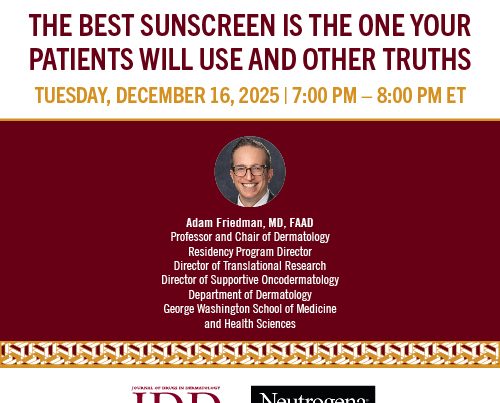Atopic Dermatitis Case Reports
Pustular Psoriasis Appearing Induced by Dupilumab Therapy in a Patient With Atopic Dermatitis
Dupilumab inhibits T-helper 2 (Th2)-driven inflammation cascade by blocking interleukin-4 (IL-4) and IL-13 signaling, which has been recognized to play a crucial role in the pathogenesis of atopic dermatitis (AD) and shown encouraging efficacy on moderate to severe AD.1 We report an interesting Chinese AD case, which developed into pustular psoriasis after treatment with dupilumab.
Treatment for Prurigo Nodularis and Pruritis
Ross Tanis MD MS, Katalin Ferenczi MD,B Michael Payette MD MBAB
Prurigo nodularis (PN) is a disease in which chronic scratching and picking of the skin due to intense pruritis results in papulonodules, notably in areas that are accessible to the patient. The pathophysiology is hypothesized to be mediated by a Th2 helper cell response, similar to that seen in atopic dermatitis, therefore, treatment of PN would be expected to elicit a therapeutic response.
An Observational Study of the Application of a Topical Cannabinoid Gel on Sensitive Dry Skin
Jalal Maghfour MD, Hope R. Rietcheck BS, Chandler W Rundle MD, Taylor M Runion BS, Zainab A Jafri MD, Sam Dercon BS, Peter Lio MD, Jon Fernandez BA, Mayumi Fujita MD PhD, Robert P Dellavalle MD PhD MSPH, Helena Yardley PhD J Drugs Dermatol. 2020;19(12):1204-1208. doi:10.36849/JDD.2020.5464
Palmitoylethanolamide (PEA), has demonstrated effectiveness in the treatment of itch, excoriation and erythema in AD patients. Phytocannabinoids including cannabidiol (CBD) are becoming increasingly accessible to the public and continue to be advertised for their efficacy to treat inflammatory skin disorders such as eczema.
Two Cases of Recalcitrant Dyshidrotic Eczema Treated With Dupilumab
Ryan A. Gall MD, John D. Peters MD, Alyson J. Brinker MD
Dyshidrotic eczema, also known as dyshidrosis or pompholyx when involving larger bullae, is a chronic, relapsing palmoplantar dermatosis characterized by intensely pruritic and frequently painful deep-seated vesicles and bullae.
Dupilumab in the Treatment of Dyshidrosis: A Report of Two Cases
Gillian K. Weston MD, Jette Hooper, Bruce E. Strober MD PhD J Drugs Dermatol. 2018;17(3):355-356.
We report two cases of recalcitrant dyshidrotic eczema treated successfully with dupilumab at standard dosing. Further studies to establish the efficacy of dupilumab in the treatment of dyshidrosis are warranted.
Is Dupilumab an Immunosuppressant?
Candida Esophagitis Associated Treatment of Atopic Dermatitis
Horrendous, Treatment-resistant Pediatric Atopic Dermatitis Solved With a Change in Vehicle
Sponsored
Podcast Episodes
Choosing Wisely: Capitalizing on Atopic Dermatitis Clinical Trial Data for Meaningful Selection of Topical Agents
We are finally getting what we asked for: Pharma is ponying up for head to head studies to provide us with meaningful data to help make better clinical decisions. However, these valuable projects are often with systemic agents, such as biologics, leaving topical treatments in the dust. To address this, Dr. Lawrence Eichenfield, Professor of Dermatology and Pediatrics, UCSD, and colleagues sought to make the most out of the data we do have on the litany of topical options for atopic dermatitis and provide efficacy and safety guidance (A for effort!). Tune in to hear what this dream team concocted about creams. Hear how an expert approaches new atopic dermatitis patients. Don’t miss out – this is all very topical.
Trending Now: Shifts and Gaps in Atopic Dermatitis Management by Derm and Non-Derm Physicians
Back by popular demand, Dr. Steven Feldman, Professor of Dermatology, Pathology and Public Health joins host Dr. Adam Friedman from GW School of Medicine to review his recent database dive entitled “Trends in Atopic Dermatitis Management: Comparison of 1990-1997 to 2003-2012.” What new trends, both good and bad, have emerged? What can we expect and hope for the future of AD care? What tricks of the trade do these two employ when utilizing systemic immunosuppressants? Itching for answers? Make sure to tune in…
Go superpotent or go home: The utility and safety of Class 1 topical steroids
In this edition of the JDD Podcast, Ask the Investigator, host Dr. Adam Friedman digs deep with UCSF Assistant Professor of Dermatology Dr. Tina Bhutani to powerlift the most up to date safety data on Class 1 superpotent topical steroids from her study entitled “Update on the Systemic Risks of Superpotent Topical Steroids.” Is steroid phobia valid, or does proper use of steroids properly protect from the adverse event boogeyman. Hear from the expert how to effectively use topical steroids while limiting local and systemic side effects, and how to get your patients on board, especially those nay sayers. Do not miss this clinically relevant and im-POTENT podcast ( nailed it!).
We’re Not Alone: The role of the cutaneous microbiota in maintaining skin health
In this special edition of the JDD podcast, with consideration from La Roche-Posay, host Dr. Adam Friedman is joined by Acne guru Dr. Hilary Baldwin, Director of the Acne Research Center and Associate Professor of Dermatology at SUNY Downstate, to review the cutting edge of cutaneous microbiome research and translational applications. Yes you are covered in bacteria – accept it, own it, and love it. Learn how harmony between the >500 species on our skin keep our barrier and cutaneous immunity in check, and conversely, how dysbiosis can facilitate a broad range of cutaneous pathology. This special edition is not to be missed!
CME Library
Choosing Wisely: Capitalizing on Atopic Dermatitis Clinical Trial Data for Meaningful Selection of Topical Agents
Translational Lecture Series
Targeting cAMP Signaling for the Treatment of Inflammatory Diseases of the Skin
 Dr. Jon Zippin, Assistant Attending Dermatologist and Assistant Professor of Dermatology at Weill Medical College of Cornell, elucidates the complexity of cAMP biology and the translational impact of PDE4 inhibition as it relates to chronic inflammatory skin diseases. Tune in to learn why targeting this pathway is clinically meaningful but also where more work is needed to improve outcomes.
Dr. Jon Zippin, Assistant Attending Dermatologist and Assistant Professor of Dermatology at Weill Medical College of Cornell, elucidates the complexity of cAMP biology and the translational impact of PDE4 inhibition as it relates to chronic inflammatory skin diseases. Tune in to learn why targeting this pathway is clinically meaningful but also where more work is needed to improve outcomes.
Update on Pediatric Inflammatory Skin Disorders: How Pathogenesis Informs Treatment
 Dr. Amy Paller, Walter J. Hamlin Professor and Chair of Dermatology & Professor of Pediatrics at Northwestern University Feinberg School of Medicine in Chicago, Illinois, delivers a presentation discussing the cause and treatment of pediatric Atopic Dematitis, including co-morbidities, epidermal barrier impairment, and compliance issues.
Dr. Amy Paller, Walter J. Hamlin Professor and Chair of Dermatology & Professor of Pediatrics at Northwestern University Feinberg School of Medicine in Chicago, Illinois, delivers a presentation discussing the cause and treatment of pediatric Atopic Dematitis, including co-morbidities, epidermal barrier impairment, and compliance issues.
Itch form Bedside to Bench
 Dr. Gil Yosipovitch, Professor of Dermatology at University of Miami Miller School of Medicine, provides residents and physicians access to the latest bench research and practical pearls from a master in pruritus that will help them offer the highest quality evidence-based dermatological care.
Dr. Gil Yosipovitch, Professor of Dermatology at University of Miami Miller School of Medicine, provides residents and physicians access to the latest bench research and practical pearls from a master in pruritus that will help them offer the highest quality evidence-based dermatological care.
JDD Blog

What’s New from CeraVe (Xerosis Management) and La Roche-Posay (Atopic Dermatitis Management in Diverse Patients)









